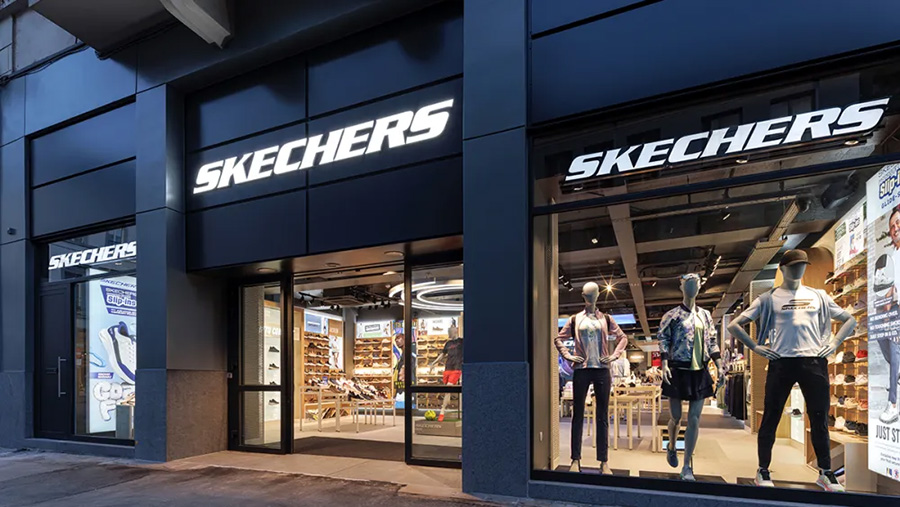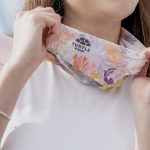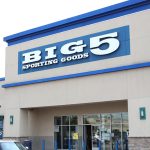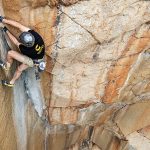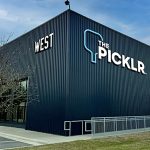S&P Global Ratings assigned a ‘BB-‘ issue-level rating to Skechers’ proposed $2.1 billion Term Loan B, due in 2032, and $1.8 billion of senior secured notes, also due in 2032, which support its acquisition by 3G Capital.
The rating agency assigned a recovery rating of ‘3’ indicating its expectation for (50 percent to 70 percent, 65 percent rounded estimate), which indicates meaningful recovery in the event of a payment default. S&P assigned a ‘BB-‘issuer credit rating to Skechers. The outlook is stable.
3G Capital will finance the transaction with $6.4 billion of new debt and $4.5 billion of equity.
S&P said it estimates pro forma S&P Global Ratings-adjusted leverage for the last 12 months (LTM) ended March 31, 2025, will be in the low-5x, improving to the high-4x area by the end of 2026, inclusive of modest synergy realization and improving EBITDA throughout the year.
S&P said in its analysis, “The leveraged buyout of Skechers U.S.A. Inc. by financial sponsor 3G Capital will add meaningful debt to the company’s balance sheet. The transaction is being financed with a proposed senior secured $2.1 billion term loan B maturing in 2032, $1.8 billion of pari passu senior secured notes due 2032, $2.5 billion of junior payment in kind (PIK0 toggle debt and a $1.6 billion revolver due in 2030 (unrated and undrawn at close). We estimate pro forma leverage will be 5.3x for the LTM ended March 31, 2025, improving to 4.8x by the end of fiscal 2026. 3G has identified significant cost-savings for Skechers. Our forecast includes $250 million in savings over the next three years, offset by the restructuring and severance costs to achieve them. The majority of the savings identified are on supply chain improvements and improved buying power. The remainder is from corporate costs and select store closures.
“We forecast growth will continue over the next 12 months despite weakened macroeconomic conditions. Skechers’ growth has outpaced its peers since the pandemic. The company has grown to $9.0 billion in annual sales in 2024 from $2.4 billion over the last 10 years. Franchised and licensed stores have increased to 3,509 from below 1,000, and its owned retail store footprint has grown to 1,787 from below 1,000, with more stores internationally than domestic. Geographically, the growth has been outpaced in the EMEA and LatAM regions, which the franchise model supports. The brand’s ecommerce sales have been a driver as its owned website has expanded into more countries. We forecast sales will increase 6 percent year over year in 2025; this is slower than 12 percent growth in 2024, which was due to a rebound in the wholesale channel after a weak 2023. We forecast growth from new store openings and increased distribution despite a weaker consumer environment negatively affecting discretionary purchases.
“Skechers is the No. 3 global player in the footwear industry by market share, which supports our ‘BB-‘ rating on the company. The global sportswear industry is estimated to be near $430 billion and highly competitive. Skechers competes against the larger sportswear brands, such as Nike and Adidas, which are sizeable and have more diverse footwear and apparel product portfolios. The global sportswear category is highly competitive, and top competitors have consistently grown from supportive trends of casualization of office attire, athleisure style, increased focus on health and increased penetration of women consumers in the category. Skechers has increased its market share position over the last several years as it grew its store base and distribution. But it also comes at a time when the footwear industry has seen brand missteps from Nike, Vans and Under Armour and outlier growth from newer entrants On Running and Hoka to revitalized growth for brands such as New Balance and Crocs. Skechers employs a fast-follow product development model, which lowers research and development and some fashion risk. However, the brand’s competitive advantage is its niche placement in the kids and above 35 age demographics with a focus on comfort and value. Skechers is sold at a lower price point to peers and under $100 per pair, and its top 5 wholesale customers reflect a more value-oriented assortment. In comparison, Nike, Adidas, On and Hoka sell primarily through the specialty retail channel and target younger consumers at much higher price points, though they have SKUs that could compete directly with Skechers. Therefore, we view the Skechers’ consumer as underserved.
“We view 3G Capital as a financial sponsor owner, which constrains our financial risk profile. Pro forma for this transaction, 3G Capital will be the majority owner of the company with approximately 80 percent ownership and control the board. The founder, current CEO Robert Greenberg and his family and management will own the remainder of the company. We view 3G Capital as a financial sponsor, given its use of debt and leverage to buy companies. Given its small portfolio of investments and strategy, we think it has a longer holding period than other financial sponsors. We do not expect 3G Capital will use free operating cash flow (FOCF) for acquisitions, given Skechers’ organic growth prospects. However, we do not exclude the possibility that excess FOCF could be used for shareholder distributions in the future while maintaining leverage below 5x.
“Skechers is exposed to tariff risk. Skechers does not own any of its manufacturing and produces its footwear, mostly in Vietnam and China. The company has meaningfully reduced its sourcing mix from China in 2025. However, we believe it could be difficult for the company to further reduce its exposure to tariffs on Chinese imports because kids’ footwear, which is price-sensitive and low-margin, would be difficult to manufacture elsewhere. Still, the U.S. represents 30 percent of its cost of goods sold, and we expect the company will mitigate its tariff risk through a combination of producing more in Vietnam for the U.S. and through modest price increases if needed. The company stated a minimal price increase could fully offset the current proposed tariff rates without pullback in demand, given its already lower price point. Furthermore, the brand can benefit from pullback in other brands, as more expensive brands will raise prices by a wider margin to offset tariffs. However, Skechers is exposed to a lower-income demographic than Nike, Adidas, and New Balance, and price-sensitive consumers are likely to pull back first and at a greater degree, making it difficult to offset the tariffs.
“We estimate FOCF will improve over time as capital expenditures (capex) decrease. As a family-owned, publicly traded company, Skechers was spending more on growth capital expenditures on owned distribution centers to support future growth. Additionally, the company spent more on its corporate offices and had multiple airplanes that required maintenance. On a go-forward basis we project capital expenditures to come down as the growth projects are completed and capex is closer to maintenance levels. We project $620 million of capex in 2025, going down to approximately $370 million in 2026, resulting in FOCF of $125-$150 million and $450-$500 million, respectively. We do not assume any shareholder returns.
“Sizeable debt burden will lead to significant interest costs. We estimate annual interest expense (including PIK interest) will be near $650 million and EBITDA interest coverage in the 2.8x range after a full year of PIK interest. Our model assumes the PIK toggle notes will be PIK for the first two years, but note that the company has the option to PIK or pay cash at their discretionary on a period-by-period basis. The option to PIK will give the company flexibility during challenging periods, but it will also accrue at a high 10.5 percent rate, which will materially burden the balance sheet and cash flow.
“The stable outlook reflects our forecast for continued revenue growth of at least mid-single-digit percent due to increased distribution, market share gains, and new stores. The outlook also incorporates our expectation for leverage to be in the 4x-5x range 12 months post-transaction close.”
Image courtesy Skechers

